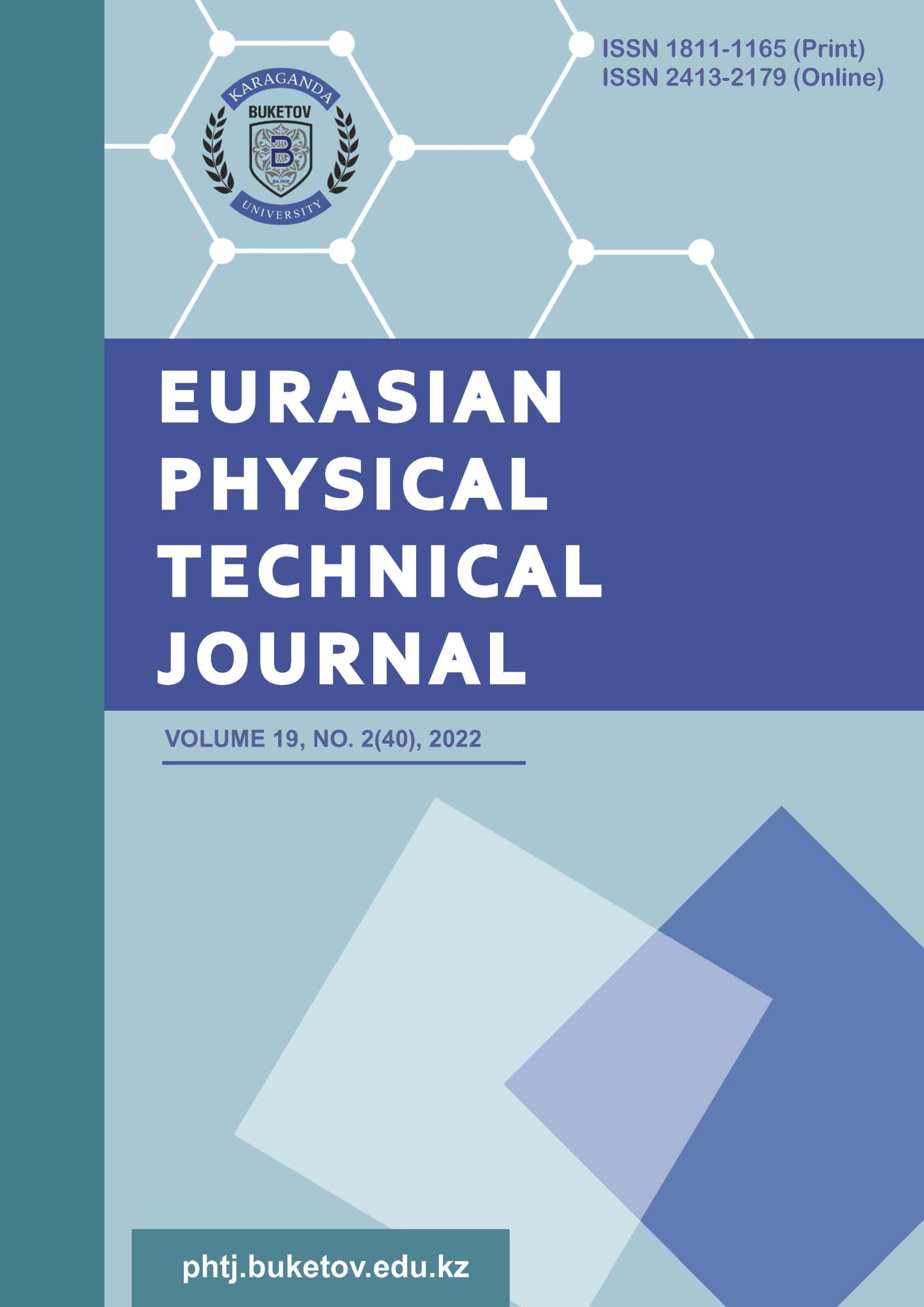SPECTRAL OBSERVATIONS OF GEOSTATIONARY SATELLITES
DOI:
https://doi.org/10.31489/2022No2/93-100Keywords:
Optical measurements, Geosynchronous Earth Orbit, spectroscopy, artificial Earth satellites, orbital mechanics, observations, material spectraAbstract
One of the main tasks of the situational awareness system in near-Earth space is to determine the type and class of observed objects by analyzing its reflection spectra. This paper proposes a methodology and interpretation of the spectral observational data of geostationary orbit satellites obtained at the Tian Shan Astronomical Observatory (Kazakhstan) from June-December 2021. 8 geostationary objects, the type and design features of which are known were selected as observation targets. The selected satellites are stable (no fast rotation of these objects was detected) and have large reflecting surface areas. An analysis of the obtained reflection spectra shows the dependence on the phase angle of the object. The studies carried out are especially relevant for objects in high orbits, where the only currently available methods of detection and study are groundbased optical photometry and spectroscopy using meter-class telescopes.
References
Alberto B., et. al. Physical characterization of the deep-space debris WT1190F: A testbed for advanced SSA techniques. Advances in Space Research, 2019, Vol. 63, pp. 371–393.
Reyes J.A., et. al. Spectroscopic behavior of various materials in a GEO simulated environment. Acta Astronautica, 2021, Vol. 189, pp. 576-583, doi: https://doi.org/10.1016/j.actaastro.2021.09.014
Bengtson M., et. al. Optical Characterization of Commonly Used Thermal Control Paints in a Simulated GEO Environment. The Advanced Maui Optical and Space Surveillance Technologies Conference, 2018, Proceedings, Hawaii, id.33.
Bedard M.D., Levesque M., Wallace B. Measurement of the photometric and spectral BRDF of small Canadian satellites in a controlled environment. DRDC-VALCARTIER-SL, 2011, Vol. 343, No 7, pp. 2011.
Cowardin H. et al. Observations of Titan IIIC Transtage fragmentation debris. Proceedings of the Advanced Maui Optical and Space Surveillance Technologies Conference, 2013, doi: https://amostech.com/2013-technical-papers/
NASA JSC Spacecraft Materials Spectral Database. 2018. Available at: https://ntrs.nasa.gov/ (Dec 10, 2021).
Farnham T.L., Schleiche D.G., A'Hearnc M.F. The HB Narrowband Comet Filters: Standard Stars and Calibrations. Icarus, 2000, Vol. 147, pp. 180–204. doi: https://doi.org/10.1006/icar.2000.6420.
Tedesco E.F., Tholen D.J., Zellner B. The eight-color asteroid survey - Standard stars. Astronomy & Astrophysics, 1982, Vol. 642, No A80, pp. 29.
Cayrel de Strobel G. Stars resembling the Sun. Available at https://doi.org/10.1007/s001590050006 (Jan 22, 2022)
Virtanen P., Gommers R., Oliphant T.E., et.al. SciPy 1.0: Fundamental Algorithms for Scientific Computing in Python. Nature Methods, 2022, Vol. 17, No 3, pp. 261-272.
Reyes J.A., Darren C. Characterization of Spacecraft Materials using Reflectance Spectroscopy. The Advanced Maui Optical and Space Surveillance Technologies Conference Proceedings, 2018, Hawaii, Ed.: S. Ryan, The Maui Economic Development Board, id.57.
Reyes J.A., et. al. Understanding optical changes in on-orbit spacecraft materials. Proceedings of the SPIE, 2019, Vol. 11127, id. 111270I, pp. 13, doi: 10.1117/12.2528926
Plis E.A., et. al. Solar panel coverglass degradation due to the simulated GEO environment exposure. Proceedings of the SPIE, 2021, Vol. 11727, id. 117270W, pp. 8. doi: 10.1117/12.2588655
Plis E.A., et. al. Effect of Simulated GEO Environment on the Properties of Solar Panel Coverglasses. IEEE Transactions on Plasma Science, 2021, Vol. 49, No 5, pp. 1679-1685. doi: 10.1109/TPS.2021.3070196
Fedorenko D.S., Legkov K.E., Modeling of the high-orbital satellite reflection spectrum. T-Comm: Telecommunications and transport, 2020, Vol. 14, No 11, pp. 14-20. doi: 10.36724/2072-8735-2020-14-11-14-20













